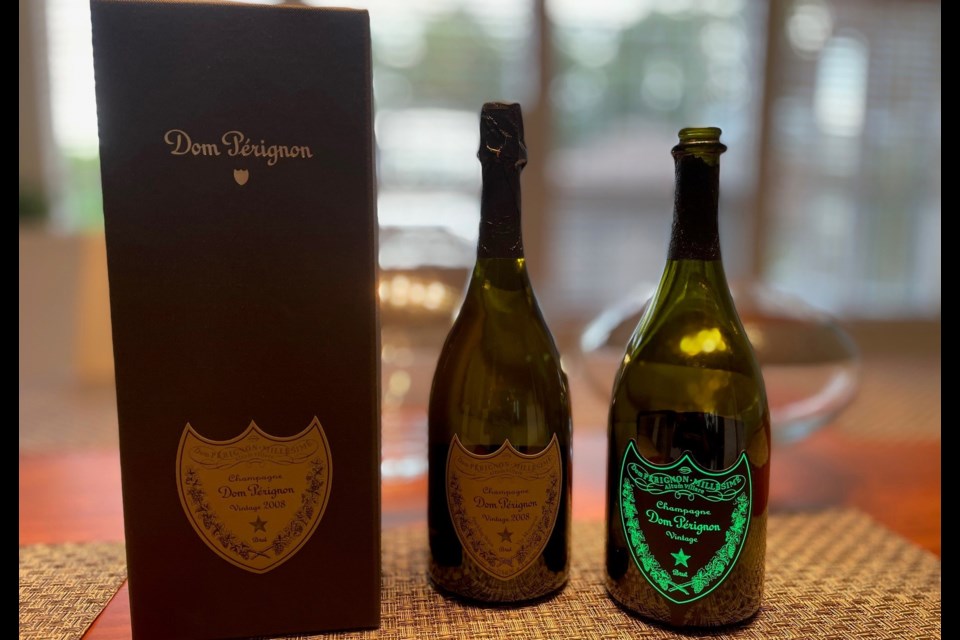Champagne is a beloved alcoholic beverage used to celebrate joyous occasions. Only sparkling wines made under strict requirements and using grapes originating from the Champagne region in the northeast area of France can call themselves Champagne. All other sparkling wines, even if they use the same production methods and same grape varietals, cannot be called Champagne. Some popular Champagne-like sparkling wines include Cava, Prosecco and Cremant D’Alsace.
But the creation of modern Champagne happened by chance! Wine has been made in the Champagne region since the fifth century. At that time, almost all wine produced and drunk by consumers were red wines but due to the climatic conditions of the region, most wines produced in the Champagne region were pale red, more acidic and lighter in style. This style of wine was not as popular to ancient consumers compared to the more robust wines made in Italy or even neighbouring Burgundy resulting in white wines eventually being produced in the Champagne region.
The person who is most associated with the creation of Champagne is Dom Perignon. However, he was not the person who “invented” champagne. In 1662, an English scientist and physician Christopher Merret, found that adding sugar to a finished wine created a second fermentation process, which is the foundation of how Champagne is produced today. While the English nobility loved this fizzy drink, the people in Champagne produced this fizzy drink by accident. Because of the cold winters in Champagne, yeast in the wines was re-awakened in the spring, which created carbon dioxide inside the bottles, causing many bottles to explode. This was seen as undesirable so Perignon was charged to find ways to get rid of the carbonation produced in the wines!
Luckily, the French nobility also began to enjoy these fizzing wines like the English nobility. Perignon found ways to prevent bottles from exploding and control the carbonation instead of getting rid of the carbonation altogether. He discovered that English glass makers had invented stronger glass that could withstand the carbon dioxide created inside the bottle. He also bound corks with hemp so the cork would not pop off. Perignon was credited with many improvements in the Champagne-making process including horticulture and selection techniques which are still used today. Interestingly, although Perignon lived in the late 1600s, the champagne, named after him, Dom Perignon, is a brand that was not created until 1921. In addition, Dom Perignon is not his full name. “Dom” is actually a title given to certain monks in a monastery but his full name is actually Dom Pierre Perignon.
Throughout the development of Champagne during the 19th century, consumers preferred a much sweeter style of Champagne compared to modern champagne. That changed in 1846 when the Champagne house Perrier-Jouët made Champagne without any added sugar. This style was initially not well received as many people felt it was too severe, or brute-like. On modern Champagne labels, some Champagnes are labelled as “Brut” or dry style Champagnes and some Champagnes are labelled as “Demi-Sec” or half dry style Champagnes.
Now it is your turn to experience the beauty of Champagne. Our liquor stores have many examples of Champagne you can purchase. You can purchase Dom Perignon, which is a vintage Champagne (grapes used to produce the Champagne all come from one year) for $319.99 per bottle. If you are looking for something a bit more affordable, I recently had a bottle of Mumm Non Vintage Champagne (meaning the grapes used to produce this Champagne may come from different years) for $77.99 per bottle. Until next time, happy drinking!
Tony Kwan is a lawyer by day, food and wine lover by night, Kwan is an epicurean who writes about wine, food and enjoying all that life has to offer.



